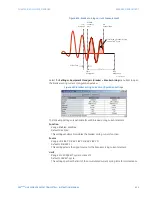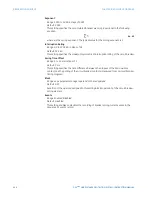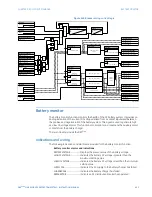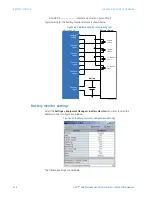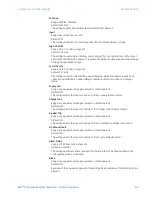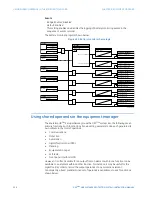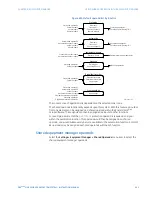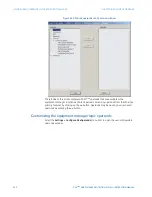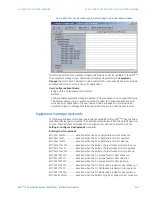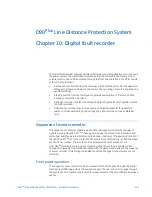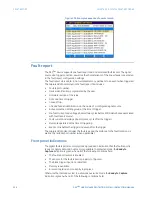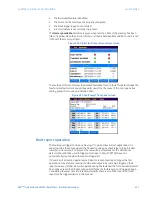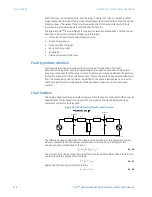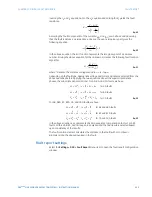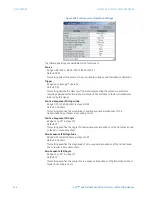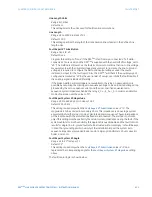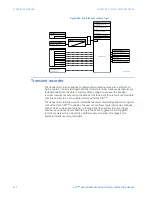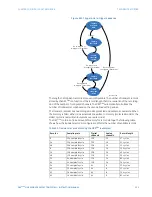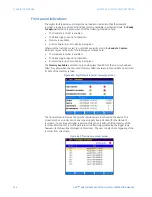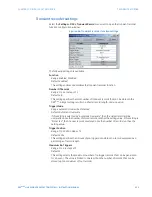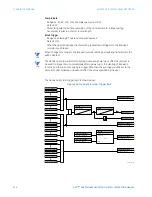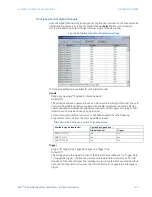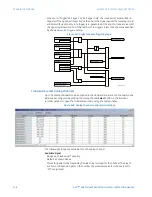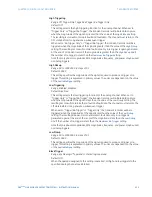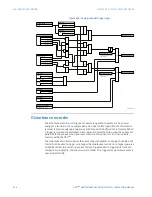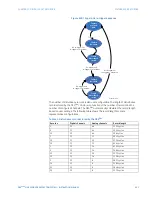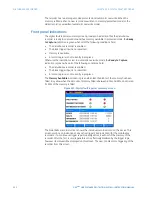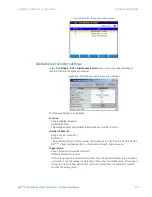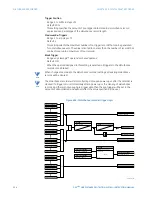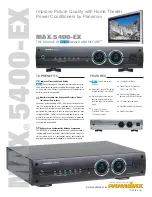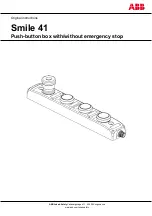
CHAPTER 10: DIGITAL FAULT RECORDER
FAULT REPORT
D90
PLUS
LINE DISTANCE PROTECTION SYSTEM – INSTRUCTION MANUAL
509
Inserting the
I
A
and
I
B
equations into the
V
A
equation and solving for
R
F
yields the fault
resistance.
Eq. 49
Assuming the fault components of the currents
I
A(F)
and
I
B(F)
are in phase, and observing
that the fault resistance, as impedance, does not have any imaginary part gives the
following equation.
Eq. 50
In the above equation, the Im( ) function represents the imaginary part of a complex
number. Solving the above equation for the unknown
m
creates the following fault location
algorithm.
Eq. 51
where * denotes the complex conjugate and
I
A(F)
=
I
A
–
I
A(pre)
.
Depending on the fault type, appropriate voltage and current signals are selected from the
phase quantities before applying the two equations above (the superscripts denote
phases, the subscripts denote stations). For AG, BG, and CG faults, we have:
Eq. 52
For AB, ABG, BC, BCG, CA, and CAG faults, we have:
Eq. 53
In the above equations,
K
0
represents the zero-sequence compensation factor. For ABC
faults, all three AB, BC, and CA loops are analyzed and the final result is selected based
upon consistency of the results.
The fault location element calculates the distance to the fault (with
m
in miles or
kilometers) and the phases involved in the fault.
Fault report settings
Select the
Settings > DFR > Fault Report
menu item to open the fault report configuration
window.
²
$)
%)
$)
$
$
)
,
,
,
=
P,
9
5
,P
²
$)
$
$
,
=
P,
9
,P
,P
$)
$
$)
$
,
=,
,
9
P
$
$
$
$
$
$
$
,
.
,
,
9
9
IRU$*IDXOWV
$
%
$
$
%
$
$
,
.
,
,
9
9
IRU%*IDXOWV
$
%&
$
$
&
$
$
,
.
,
,
9
9
IRU&*IDXOWV
IRU$%DQG$%*IDXOWV
IRU%&DQG%&*IDXOWV
%
$
$
$
$
%
$
$
$
$
,
,
,
9
9
9
²
²
&
$
%
$
$
&
$
%
$
$
,
,
,
9
9
9
²
²
$
$
&
$
$
$
$
&
$
$
,
,
,
9
9
9
²
²
IRU&$DQG&$*IDXOWV

